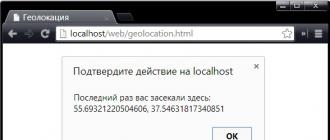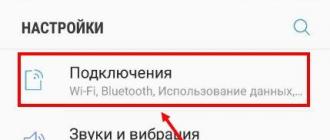You have probably heard the terms ICMP, TCP, UDP and the like. This article describes the basic network protocols. What do they mean, where are they used and what is the difference between them. I tried to systematize this information in order to deal with it more thoroughly.
The Internet is based on the work of several protocols, which are located one on top of the other. What are the main ones and what do these abbreviations mean?
MAC (Media Access Control)Is a low-level protocol. It is used as identification of devices on a local network. Each device that is connected to the Internet has its own unique MAC address. This address is specified by the manufacturer. This is a connection layer protocol that every user has to deal with quite often.
IP (Internet Protocol)compared to MAC, it is one level higher. IP addresses are unique to each device and enable computers to find and identify each other on the network. IP belongs to the network layer of the TCP / IP model.
Networks are connected in complex structures, and with the help of this protocol, machines determine possible paths to the target device (these paths can change during operation). The protocol is implemented using the well-known types of IPv4 and IPv6, which I already wrote about in one of the.
ICMP (Internet control message protocol) is designed to enable devices to exchange messages. These can be, for example, error messages or informational alerts. Data this protocol does not transfer information. This protocol is on a layer higher than the IP protocol.
TCP (Transmission control protocol) - one of the main network protocols, which is on a par with the previous ICMP protocol. It manages the transfer of data. There are situations when packets may arrive in the wrong order or get lost somewhere. But TCP ensures that the delivery order is correct and that packet transmission errors can be corrected. The information is served in the correct order for the application. The connection is carried out using a special algorithm, which involves sending a request and confirming the opening of the connection by two computers. Many applications use TCP, including SSH, WWW, FTP and others.
UDP (user datagram protocol)- a well-known protocol, somewhat similar to TCP, which also functions at the transport layer. The main difference is unreliable data transmission: data is not validated upon receipt. In some cases, this is sufficient. By sending fewer packets, UDP is faster than TCP. There is no need to establish a connection and the protocol is used to send packets to multiple devices or IP telephony at once.
Application protocolHTTP (hypertext transfer protocol) underlies the work of all sites on the web. HTTP makes it possible to request necessary resources from a remote system, such as web pages and files.
FTP (file transfer protocol) - used for data transmission. It functions at the application level, which ensures the transfer of a file from one computer to another. FTP is rightfully considered insecure and should not be used to transfer personal data.
- used to convert clear and readable addresses into complex IP addresses that are difficult to remember and vice versa. Using DNS, we get access to an Internet resource by its domain name.
also refers to an application layer protocol. It is designed to provide remote control of the system over a secure channel. This protocol is used to operate many additional technologies. Learn more about file transfer protocols in and.
POP3 (Post Office Protocol) Is a standard protocol used to receive e-mail messages. The mail connection protocol is designed to process requests to receive mail from client mailers.
SMTP (Simple Mail Transfer Protocol) - protocol for sending mail. The main task of the SMTP server is to return or acknowledge receipt, or alert about an error, or request additional data.
All of these protocols ensure the smooth operation of the Internet that we use every day. Understanding networking at a basic level is very important for every server administrator or webmaster. This is used to properly configure your services on the Internet, as well as easily detect problems and troubleshoot problems.
4589 time (s) 10 Viewed time (s) today
Data transfer protocol - set of interface conventions logic levelthat define the exchange of data between different programs. These conventions define a uniform way of transmitting messages and handling errors when software interacts with spaced hardware connected by one or another interface.
The signaling protocol is used to control the connection - for example, set up, forward, disconnect. Examples of protocols: RTSP, SIP. For data transfer, protocols such as RTP are used.
Network protocol - a set of rules and actions (sequence of actions), which allows connection and data exchange between two or more devices connected to the network.
Different protocols often describe only different sides of one type of communication. The names "protocol" and "protocol stack" also refer to the software that implements the protocol.
The most famous protocols used on the Internet:
- HTTP (Hyper Text Transfer Protocol) is a transfer protocol
First of all, we will define the areas of application of data transmission channels in the electric power industry and the tasks that are solved with their help. At present, the main areas of application of data transmission systems include relay protection and automation systems (RPA), dispatching and automated technological control of electric power facilities (ASTU), as well as automated energy metering systems. Within the framework of these systems, the following tasks are solved:
ASTU systems
- Data transmission between local telemechanics devices (TM), relay protection and automation devices and a central transceiver station (CTSP).
- Data transfer between the object and the dispatch center.
- Data transfer between dispatch centers.
Accounting systems
- Data transfer from metering devices to data collection and transmission devices (USPD).
- Data transfer from the USPD to the server.
Regarding relay protection systems, the following can be noted: despite the fact that the collection of data from relay protection and automation devices in the automated control system in digital format began to be introduced since the advent of digital relay protection and automation devices, connections between the devices are still organized by analog circuits.
In relay protection and automation systems, information transmission can perform the following functions:
- Transfer of discrete signals.
- Data transfer between relay protection and automation devices and CPPS.
Another important transmission channel, common both for relay protection and automation systems and for automated control systems and metering systems, is the channel through which measurements are transmitted from measuring current and voltage transformers. Until recently, there was no talk about the introduction of digital communication protocols at this level, however, bearing in mind the emergence of a protocol for transmitting instantaneous values \u200b\u200bof current and voltage IEC 61850-9-2, it is also worth dwelling on the problems of this information channel.
We will sequentially consider each of the above functions of information transfer and existing approaches to their implementation.
Transfer of measurements from CTs and VTs
Signal transmission from measuring current (CT) and voltage (VT) transformers is carried out via cables with copper conductors of alternating current and voltage, respectively. This method is characterized by problems that are often mentioned in the literature:
- large ramification and length of copper cables, leading to the need to use a large number of auxiliary equipment (test blocks, terminal blocks, etc.) and, as a result, to an increase in the cost of systems and the complexity of installation and commissioning;
- susceptibility of measuring circuits to electromagnetic interference;
- the complexity or lack of the possibility of monitoring the health of the measuring channel at the rate of the process, the complexity of finding the place of damage;
- the influence of the resistance of the measuring circuits on the measurement accuracy and the need to match the power of the CT / VT with the resistance of the circuits and the load of the receiver.
Transfer of discrete signals between devices
Transfer of discrete signals between devices is traditionally carried out by supplying an operating voltage by closing the output relay of one device to a discrete input of another.
This method of transferring information has the following disadvantages:
- a large number of control cables are required between the equipment cabinets;
- devices must have a large number of discrete inputs and outputs;
- the number of transmitted signals is limited by a certain number of discrete inputs and outputs;
- there is no possibility to control communication between devices;
- false triggering of the discrete input of the device is possible when there is a short to ground in the signal transmission circuit;
- circuits are susceptible to electromagnetic interference;
- the complexity of the expansion of relay protection systems.
Data transfer between relay protection and automation station
Data exchange between relay protection and automation equipment at the facility is carried out in digital format. However, due to the need to integrate a large number of different devices, this method has the following features:
- the existence of a large number of different data transfer protocols, and the CPPS device for the successful integration of any devices must support all these protocols;
- lack of a unified data naming system, leading to the need to maintain a large amount of descriptive documentation, as well as to difficulties and errors during setup;
- relatively low data transfer rate due to the presence of a large number of serial interfaces.
Data transfer between the CPPS of the facility and the dispatch center
Data transfer between the facility and the control center is also carried out in digital format. Typically, IEC 60870-101 / 104 protocols are used for these purposes. Features of the implementation of these communication systems:
- the need to transfer data in dispatch control protocols, as a rule, different from the protocols used at the substation;
- transfer of a limited amount of information, which is due to the need to reassign all signals from one protocol to another, and, as a result, the loss of some data, the transfer of which was not considered appropriate at the design stage;
- the lack of uniform names of signals within the facility and in the network control centers (NCC), leading to the complexity of setting up and tracking errors.
Let's turn to fig. 1, which shows a schematic diagram of the organization of data transmission. A large number of proprietary (proprietary) protocols should be noted. The widespread use of such protocols requires, firstly, a large number of gateways (converters), and secondly, good qualifications and experience of personnel in working with various protocols. This ultimately leads to system complexity and operational and expansion problems.
Figure: 1. Diagram of the organization of data transmission.
Let us describe briefly shown standard protocols.
Modbus
Modbus is one of the most widespread network protocols for integrating relay protection and automation devices into an automated control system, built on a client-server architecture. The popularity of this protocol is largely due to its openness, so most devices support this protocol.
The Modbus protocol can be used to transfer data over serial communication lines RS-485, RS-433, RS-232, as well as TCP / IP networks (Modbus TCP).
The Modbus standard consists of three parts, describing the application layer of the protocol, the specification of the link and physical layers, and the ADU specification for transport over the TCP / IP stack.
The advantages of this standard include its massiveness and relative ease of implementation of systems based on it. The disadvantages are the lack of the possibility of operational signaling from the end device to the master, if necessary. In addition, the standard does not allow end devices to exchange fixed data with each other without the participation of a master. This significantly limits the applicability of MODBUS solutions in real-time control systems.
IEC 60870-5-101 / 103/104
IEC 60870-5-101 is a telemechanics protocol designed to transmit TM signals to the automated control system. It is also built on a client-server architecture and is designed to transmit data over serial RS-232/485 communication lines.
The IEC 60870-5-104 protocol is an extension of the 101 protocol and regulates the use of network access via the TCP / IP protocol. IEC 60870-5-101 / 104 does not imply a semantic data model.
The IEC 60870-5-103 protocol is designed to provide the possibility of integrating relay protection and automation devices into the control system of a power facility. Unlike IEC 60870-5-101 / 104 standards, it defines semantics for a fixed set of data generated by relay protection devices. One of the main disadvantages of the IEC 60870-5-103 protocol is the relatively low data transfer rate.
IEC 60870-5-101 / 103/104 protocols provide a sufficiently high functionality when solving problems of telecontrol, tele-signaling and telemetry, integrating these devices into control systems. Unlike Modbus, they also allow sporadic data transfers from devices.
The protocols, as in the previous case, are based on the exchange of tables of signals, and the types of data that are exchanged are rigidly fixed.
In general, the protocols are well suited for solving the above range of tasks, but they have a number of disadvantages:
- Data transfer is carried out in two stages: assignment of indexed communication objects to application objects; assignment of application objects to variables in the application database or program. Thus, there is no semantic link (in whole or in part) between the transmitted data and the data objects of the applied functions.
- The protocols do not provide for real-time signal transmission. In this case, real-time signals are understood as data that must be transmitted at the rate of the process with the shortest possible time delays, which include, for example, shutdown commands, transmission of instantaneous values \u200b\u200bof currents and voltages from measuring transformers. In the transmission of such signals, link delays are critical. Note that this point is not related to the ability to synchronize devices with a single time server, but concerns specifically the issues of data transfer speed between devices.
DNP3
In Russia, this standard is poorly distributed, but some automation devices still support it. For a long time, the protocol was not standardized, but now it is approved as an IEEE-1815 standard.
DNP3 supports both RS-232/485 serial communications and TCP / IP networks. The protocol describes three layers of the OSI model: application, channel and physical. Its distinctive feature is the ability to transfer data both from the master to the slave and between slave devices. DNP3 also supports sporadic data transmission from slaves.
As in the case of IEC-101/104, the transfer of data is based on the principle of transferring a table of values. At the same time, in order to optimize the use of communication resources, not the entire database is sent, but only its variable part.
An important difference between the DNP3 protocol and those considered earlier is the attempt to describe the data model with an object and the independence of data objects from transmitted messages. DNP3 uses an XML information model description to describe the data structure.
In a detailed comparison of the protocols is given, but we are in table. 1 we will give short excerpts in relation to the protocols discussed above.
Table 1. Data transfer protocols
| Parameter | Protocol | ||
| Modbus | IEC-101/103/104 | DNP3 | |
| Communication lines | RS-232/485/422 TCP / IP (Modbus TCP) |
RS-232/485/422 TCP / IP (104) |
RS-232/485/422 TCP / IP |
| Architecture | Client - Server | Client - Server | Client - Server |
| Data transfer principle | Sharing Indexed Data Points | ||
| Sporadic data transmission | No | Yes | Yes |
| Semantic data model | No | No Basic (103) |
Yes |
| Real-time data transmission | No | No | No |
conclusions
From the presented brief analysis, it can be seen that the existing communication protocols quite successfully allow implementing the tasks of dispatch control / data integration into control systems, but do not allow real-time functions (such as the transmission of discrete signals between relay protection and automation devices, the transmission of instantaneous values \u200b\u200bof currents and voltages).
A large number of proprietary protocols complicate the process of integrating devices into a single system:
- The protocols must be supported by the controller and the DSPP, which requires the implementation of support for a large number of protocols in the ODR and DSPP simultaneously and leads to an increase in the cost of equipment.
- To integrate devices using proprietary protocols, the qualification of the commissioning personnel is required to work with each of them.
- Reassigning signals from proprietary protocols to general industrial protocols and back often results in the loss of information, including additional information (such as time stamps, quality stamps, etc.).
When transferring data, a large number of serial interfaces are still used, which imposes restrictions on the data transfer rate, the amount of data transferred and the number of devices simultaneously connected to the information network.
Transmission of critical control commands (commands to disconnect switches from relay protection, operational interlocks, etc.) and digitized instantaneous values \u200b\u200bof currents and voltages is impossible in digital format due to the unsuitability of existing communication protocols for transferring this kind of information.
It should be noted that the existing communication protocols do not impose requirements on the formal description of the configurations of protocols and transmitted signals, in connection with which the project documentation for the APCS systems contains only a description of signals on solid media.
Basic provisions when creating the IEC 61850 standard
Work on the IEC 61850 standard began in 1995 and was initially led by two independent, parallel working groups: one formed by the UCA, developing Generic Object Models for Substation Equipment (GOMFSE); the second, formed within the framework of IEC Technical Committee 57, was involved in the creation of a data transfer protocol standard for substations.
Later, in 1997, the works of both groups were combined under the auspices of the working group 10 of the IEC TC 57 and became the basis of the IEC 61850 standard.
The standard is based on three provisions:
- It must be technologically independent, that is, regardless of technological progress, the standard must undergo minimal changes.
- It should be flexible, that is, it should be able to solve different problems using the same standardized mechanisms.
- It should be extensible.
The development of the first edition of the standard took about 10 years. Meeting these requirements, the standard allows you to meet the changing needs of the electric power industry and use the latest advances in the field of computer, communication and measurement technologies.
Today IEC 61850 consists of 25 different documents (including those under development) that cover a wide range of issues and make it much more than just a specification for a number of communication protocols. Let's note the main features of the standard:
- Determines not only how information should be exchanged, but also what information should be exchanged. The standard describes abstract models of facility equipment and functions performed. The information model underlying the standard is represented in the form of classes of data objects, data attributes, abstract services and a description of the relationships between them.
- Defines the process of designing and setting up systems.
- Defines the System Configuration description Language (SCL). This language provides the ability to exchange device configuration information in a standardized format between software from different manufacturers.
- Describes equipment testing and acceptance procedures.
When working with IEC 61850, you need to understand that the standard:
- does not describe specific implementation methodologies, communication architectures, or requirements for specific products;
- does not standardize the functionality and algorithms of devices,
- focuses on describing the functionality of primary and secondary equipment, protection, control and automation functions visible from the outside.
Of course, such a large-scale work cannot be perfect. Examples of inaccuracies and flaws in the standard, in particular, are the lack of methods for formal verification of compliance with the requirements of the standard, a number of technical inaccuracies in the description of parameters and approaches to their processing, and so on. These issues will be discussed in more detail in future publications.
The disadvantages of the standard often include the lack of specificity in describing the requirements and too much freedom in implementation, which, in the opinion of the developers, is precisely one of its main advantages.
List of references
- O.I. Bagleybter Current transformer in relay protection networks. Counteraction to CT saturation of the aperiodic component of the short circuit current // News of ElectroTechnics. 2008. No. 5 (53).
- Schaub P., Haywood J., Ingram D., Kenwrick A., Dusha G. Test and Evaluation of Non Conventional Instrument Transformers and Sampled Value Process Bus on Powerlink's Transmission Network. SEAPAC 2011. CIGRE Australia Panel B5.
- Shevtsov M.V. Transfer of discrete signals between URZA through digital communication channels // Relay. 2009. No. 1.
- Schwarz K. Comparison of IEC 60870-5-101 / -103 / -104, DNP3, and IEC 60870-6-TASE.2 with IEC 61850 (electronic document: http://bit.ly/NOHn8L).
- Brunner C., Apostolov A. IEC 61850 Brand New World. PAC World Magazine. Summer 2007.
- IEC 61850-1: Introduction and Overview.
Data transfer protocol - set of interface conventions logic levelthat define the exchange of data between different programs. These conventions define a uniform way of transmitting messages and handling errors when software interacts with spaced hardware connected by one or another interface.
The signaling protocol is used to control the connection - for example, set up, forward, disconnect. Examples of protocols: RTSP, SIP. For data transfer, protocols such as RTP are used.
Network protocol - a set of rules and actions (sequence of actions), which allows connection and data exchange between two or more devices connected to the network.
Different protocols often describe only different sides of one type of communication. The names "protocol" and "protocol stack" also refer to the software that implements the protocol.
The most famous protocols used on the Internet:
- HTTP (Hyper Text Transfer Protocol) is a hypertext transfer protocol. HTTP is used when transferring Web pages between computers on the same network.
- FTP (File Transfer Protocol) is a protocol for transferring files from a dedicated file server to a user's computer. FTP allows the subscriber to exchange binary and text files with any computer on the network. Having established a connection with the remote computer, the user can copy the file from the remote computer to his own or copy the file from his computer to the remote one.
- POP3 (Post Office Protocol) is a standard post office protocol. POP servers handle incoming mail, and POP is designed to handle requests to receive mail from client mailers.
The Internet, which is a network of networks and unites a huge number of different local, regional and corporate networks, functions and develops thanks to the use of a single TCP / IP data transfer protocol.
A communication protocol is an agreement between two subscribers on how and in what order they will exchange data. An attempt to communicate between two interlocutors speaking different languages \u200b\u200bserves as a clear illustration of the communication protocol.
TCP / IP term includes the name of two protocols:
· Trásmissiop Control Protocol (ТСР) - transport protocol;
· Internet Protocol (IP) - routing protocol.
TCP / IP protocol provides information transfer between computers on a network.
Let's consider the operation of this protocol by analogy with the transfer of information using regular mail. In order for the letter to reach its destination, the address of the recipient (to whom the letter is sent) and the address of the sender (from whom the letter is sent) are indicated on the envelope.
In the same way, information transmitted over the network is "packed in an envelope" on which the IP addresses of the recipient's and sender's computers are "written", for example, "To: 198.78.213.165", "From: 193.124.5.33".
The contents of the envelope in computer language are called IP packet and is a collection of bytes.
In the process of forwarding ordinary letters, they are first delivered to the nearest post office to the sender, and then transferred along the chain of post offices to the nearest post office to the recipient. At intermediate post offices, letters are sorted, that is, it is determined to which next post office a letter should be sent.
On the way to the destination computer, IP packets also pass through numerous intermediate Internet servers where the routing operation is performed. As a result of routing, IP packets are directed from one Internet server to another, gradually approaching the destination computer. To operate smoothly and quickly, the computers that send, receive, and route packets must follow a set of strict rules. The set of these rules for the Internet is the Intemet Protocol (IP).
Internet Protocol - Intemet Protocol (IP) - this is a single set of rules, as a result of which computers carry out fast reception, routing and sending of IP packets.
Now let's imagine that we need to send a multi-page manuscript by mail, but the mail does not accept huge parcels and parcels. The idea is simple: if the manuscript does not fit in a regular mail envelope, it must be taken apart into sheets and sent in several envelopes. In this case, the manuscript sheets must be numbered so that the recipient knows in what sequence these sheets to be connected.
On the Internet, a similar situation often occurs when computers exchange multi-megabyte files. If such a file is sent in its entirety, then it can "clog" the communication channel for a long time, make it inaccessible for sending other messages. In this case, on the sending computer, it is necessary to split the large file into small parts, number them and transport them in separate IP packets to the receiving computer. On the receiving computer, you need to assemble the source file from separate parts. All these actions are performed on the basis of the Transmission Control Protocol (ТСР), i.e. transport protocol.
Transport puncture - Transmission Control Protocol (ТСР)- allows the sending computer to split a large file into small parts, number them and transport them in separate IP packets to the receiving computer. On the receiving computer, collects the source file from separate parts.
Interestingly, for the IP protocol, which is responsible for routing, these packets are completely unrelated to each other. Therefore, the last IP packet may well overtake the first IP packet along the way. It may happen that even the delivery routes of these packages will be completely different. However, TCP will wait for the first IP packet and reassemble the source file in the correct sequence.
The communication protocol is characterized by the concept - error correction... Error correction is a process, the general idea of \u200b\u200bwhich is that the transmitted data stream is split into IP packets, at the end of each of them a number is appended, called a checksum, calculated from the IP packet data. When receiving the received data, the checksum of each received IP-packet is calculated and compared with that received from the sender. If these two sums do not match, then the transmission with the IP packet failed. In this case, the modem is forced to request the transmission of the bad block. The speed decreases. And if errors occur again, then the connection is broken. Where do the errors come from? When transmitting data over a long distance, extraneous noise and interference are formed in the communication line, which are superimposed on the useful signal and interfere with it.






